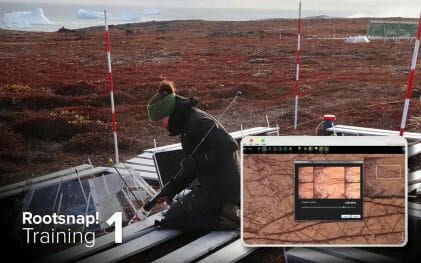September 26, 2023 at 3:43 pm | Updated September 26, 2023 at 3:43 pm | 3 min read
We are thrilled to share this insightful video produced by Arvalis, which explores the critical role of root systems in addressing climate change. Utilizing our CI-600 Minirhizotron system, Arvalis has conducted pioneering research that delves into the heart of plant production. We extend our heartfelt gratitude to everyone involved in this project, from the researchers to the assistants, for their dedication and expertise.
About Root2Res
The Root2Res project serves as a beacon in the quest for agricultural resilience in the face of climate change. Focused on developing new crop cultivars, the project underscores the importance of root systems in combating abiotic stress factors like water deficit and nutrient deficiency and their role in soil carbon storage. Equipped with advanced root phenotyping tools, genetic markers, and modeling capabilities, Root2Res aims to provide breeders, geneticists, and agronomists with the resources they need to make impactful strides in sustainable agriculture.
Watching the video or reading the transcript will give you a detailed understanding of how the Minirhizotron system contributes to these important goals. Don’t miss this chance to learn how technology and research are coming together to shape a more sustainable future.
Subscribe to the CID Bio-Science Weekly article series.
By submitting this form, you are consenting to receive marketing emails from: . You can revoke your consent to receive emails at any time by using the SafeUnsubscribe® link, found at the bottom of every email. Emails are serviced by Constant Contact
The Video Transcript
What if we took the problem of climate change at the root? Arvalis decided to do this by using a field measurement system that allows non-destructive and recurring access to the heart of the root system of plant production. Its name: Minirhizotron.
Setting Up the Minirhizotron
To set up a Minirhizotron, you need the following:
- A field
- A researcher
- A chair
- A rotating scanner with a control screen
- A guide rod.
- An experimental tube.
- An assistant to bury the tube.
- A cover to hide the light entering the tube.
- A cap to prevent flooding in the tube.
- A pole to clean the device properly.
Importance of the Root System
But why is it so essential to understand the root system? The root system is in contact with the soil; it is the nutrient capture zone, where water is absorbed, and interactions with soil microorganisms occur, including carbon capture.
Minirhizotron in the Field
Now, let’s see how it works in the field. Minirhizotrons are field measurement systems that allow us to access data variables in depth non-destructively. So, we can return and take measurements several times in a row. This will also allow us to characterize the varieties, especially in the context of the European project Root2Res, where we are looking to characterize innovative root development systems to have more resilient plants against climate change.
How it works
We push transparent tubes into the soil, so these are 2-meter tubes that we will push as deep as possible into the soil. About 70 cm remaining outside, we will measure approximately 1 meter of root depth. We put a protection system on these tubes to insulate them well and avoid temperature differences between the soil and the outside.
When the plant grows, the roots come in contact with the tube. The root scanner is inserted inside the tube and takes an image of what’s outside the tube. It takes 10-15 minutes per tube, so it’s not high throughput yet.
The images from the scanner will allow us to see the length, density, and root diameters. An algorithm will then process these images. An image segmentation algorithm detects roots in the image. Then, for each root detected, a second algorithm will measure it so that we will have root lengths and root diameters for each image. We will compare root length densities at different depths for different varieties to see which ones react to water stress or nitrogen deficiency.
Comparing Measurement Methods
In the context of Root2Res, the objective is to compare root system measurement methods in the field, including the Minirhizotron technique. For this, we compared four varieties with several repetitions and put three tubes in each of the micro-plots to also compare the variability of this type of measurement.
Development and Funding
Regarding development, the Carnot Plant Institute funded the installation system we developed and the image processing modules. Then, our job is to apply the Minirhizotron method in different projects on different themes, comparisons of durum wheat varieties, biostimulants on corn, or, as part of the Root2Res project, the resilience of the root system to climate change.
As we wrap up this enlightening journey into the world of root systems and their impact on climate resilience, we want to thank the Arvalis team and the Carnot Plant Institute for their invaluable contributions. The CI-600 Minirhizotron system continues to be a vital tool in advancing our understanding of root systems, and we are excited to see its application in various projects aimed at fostering a more sustainable future. Thank you for watching, and stay tuned for more groundbreaking research.
Related Products
Most Popular Articles
- Transpiration in Plants: Its Importance and Applications
- Leaf Area – How & Why Measuring Leaf Area…
- How to Analyze Photosynthesis in Plants: Methods and Tools
- Plant Respiration: Its Importance and Applications
- The Forest Canopy: Structure, Roles & Measurement
- Stomatal Conductance: Functions, Measurement, and…
- Forest & Plant Canopy Analysis – Tools…
- Root Respiration: Importance and Applications
- The Importance of Leaf Area Index (LAI) in…
- Irrigating with Saline or Seawater






